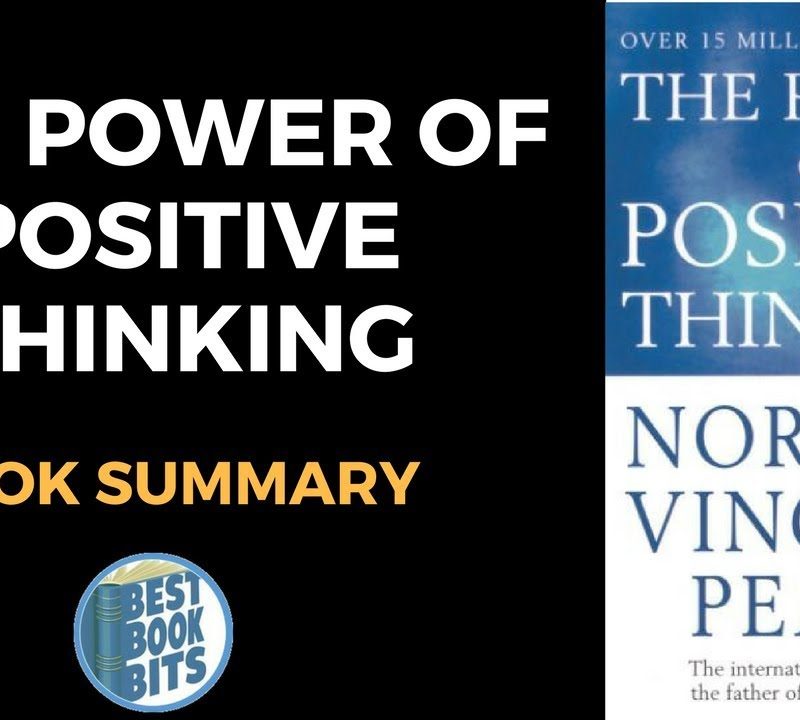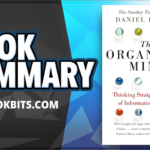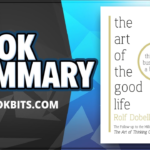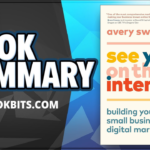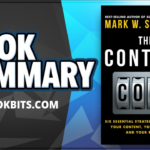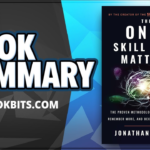GET THE 500+ BOOK SUMMARY BOX SET IN PDF & MP3 here
FOLLOW US HERE > |YouTube |Spotify | Instagram | Facebook | Newsletter | Website
The 46 Rules of Genius, The: An Innovator’s Guide to Creativity by Marty Neumeier
Marty Neumeier, acclaimed author of The Brand Gap and other books on business creativity, has compressed decades of practical experience into The 46 Rules of Genius—46 glittering gems that will light students path to creative brilliance. This is an essential handbook for students in graphic design, branding, marketing, business, Journalism and writing courses, and more.
The rules in this book are timeless. None of them are new, yet they can help students create something new. Michelangelo didn’t invent the hammer and chisel, but by using these tools he sculpted his brilliant works. And just as you can’t shape a block of marble with your bare hands, you can’t shape ideas with your bare mind. You need rules. Rules are the tools of genius. Use them when they help, put them aside when they don’t.
First, let me state, categorically, that the mark of true genius is simplicity.
So who exactly is a genius? A genius is any person who takes creativity to the point of originality. In other words, it’s someone who changes our understanding of a topic by turning insight into innovation.
But can anyone be a genius? According to researchers, it doesn’t take an IQ of 140 to become a genius. What it takes is imagination and the skills to apply it, driven by a passionate will toward a narrow goal.
Marty himself acknowledges that “There’s no such thing as an accidental genius. Anyone who’s reached that exalted state has arrived there by design. But simply wanting to get there is not enough. A would-be genius also needs a theoretical framework, a basic compass, a set of principles to guide the way forward.” The book, divided into 4 parts, is a reassuring lighthouse against the swirling tides of innovation. Geniuses from every discipline will want to keep it in sight. Part 1 (How can I innovate?) offers insightful guidance such as Feel before you think, See what’s not there, and Ask a bigger question. Interestingly, Rule #1 gives the paradoxical advice: Break the rules. Part 2 (How should I work?) offers down-to-earth tips on craft: Use a linear process for static elements, and Express related elements in a similar manner. The reader is also reminded: Don’t be boring! In Part 3 (How can I learn?) you find practical advice including Do your own projects, Invest in your originality, and Develop an authentic style. Finally, Part 4 (How can I matter?) deals with the deeper questions of a career in creativity, such as Overcommit to a mission, Build support methodically, and Become who you are.
When you face a problem, Marty recommends that you ask a series of 12 questions:
01 Have we seen this problem before?
02 What do we know about it?
03 Are the boundaries the right boundaries?
04 Are we solving the right problem?
05 Should we solve a bigger problem instead?
06 If we succeed, what will be improved?
07 What will be diminished?
08 What will be replaced?
09 What opportunities will it spawn?
10 Who stands to gain and who stands to lose?
11 Do we need to solve the problem at all?
12 Who says? So what? Why Not?
By asking these questions, you force yourself to think through the problem. When you’re done thinking, you need to get down to the actual work of making masterpieces like a genius. But remember that the mark of this genius is simplicity. So here’s how to simplify your work:
Test elements by removing them one by one to ensure that there are no unnecessary parts.
Discard any needless features because more is sometimes too much.
Kill vampire elements – any element that will take away from the main idea.
Place elements in a logical sequence so it is intuitive.
Group items into buckets so they make sense. For instance, group by use, meaning, size and so on.
Hide complexity behind a simple interface. Make it easy for people to use.
Align elements behind a single purpose. If there is one purpose, the whole design will appear simple and seamless.
Beyond these, you also want ensure originality in your ideas. These 6 steps of originality should take care of that:
Is the idea disorienting? Does it unsettle you?
Does it kill 10 birds with one stone?
Does it need to be proved?
Is it likely to force others to change?
Does it create affordances?
Can it be summarized in a sentence?
Now that you have gone over and beyond to give the most of yourself and prove your genius, it is important that you keep your axe sharpened by continuous learning. This, I strongly believe, is the cornerstone of an ever performing innovator. Most of this learning will be self-taught. Let these principles guide you:
Learn by doing.
Do work you love and believe in.
Harness habits – the brain form habits for routine tasks.
Keep your eyes on your main goal.
Cultivate your memory. Pay attention to knowledge that is specific to your craft.
Increase your sensitivity. Be able to notice the differences between outcomes.
Stretch your boundaries. Keep on raising the bar.
Customize your meta-skills. Focus on meta-skills such as emotional intelligence, critical thinking, imagination and intuition that will drive your professional success.
Feed your desire by keeping your passions alive by reading books and articles, talking to others and attending conferences.
Scare yourself. Be bold and audacious – push yourself way beyond your comfort zone.
Finally, and my favourite part, I’ll share my personal top 10 rules. Call them my personal mixtape, or even my genius platter, they have been carefully selected to suit my preference. Hope you like it!
Break the Rules. Creative rules are not rigid dictates but rough principles – patterns that a variety of artists, scientists, and thinkers have used for centuries as the scaffolding for their inventions
Feel before you think. Close your eyes and drift with the problem. Let it talk to you. Listen carefully. Give it your deepest empathy and fullest attention. Be available to the problem. Don’t try to fix it. Feel your way forward.
Frame problems tightly. Write a problem statement. List the constraints. List the affordances – the creative possibilities that exist within the problem. Describe the success.
Put the surprise where you want the attention. Focus attention on the most important part of your idea.
Apply aesthetics deliberately. Aesthetics is like a box of toys. When you play with these toys, applying them to your projects in various ways, you’ll find they can bring clarity, excitement, and nuance to your work.
Simplify. The opposite of simplicity isn’t complexity, it is disorder. While complexity seeks order through addition, simplicity seeks it through subtraction. In most designed products, what we respond to best is a rich, layered experience (complexity) combined with ease of use, ease of understanding, or ease of purchase (simplicity).
Start with curiosity, not belief. Instead of staring from belief, the genius starts from a position of curiosity, wonder, scepticism, and iconoclasm. The journey leads from the unknown to the known, and, with luck and perseverance, you’ll discover new information along the way.
Fuel your passion. Genius in, genius out.
Stay focused. Creativity requires sustained focus. You can’t switch off the world. But you can lock it out temporarily while you work. You can carve out quiet time to think things through by yourself, so that when you return to the world you have something deep and whole to show for it.
Make new rules. The first rule of genius is to break the rules. The last rule is to replace them with your own rules. Your job is to melt down these rules and recast them as principles that make sense to you, your discipline, and the needs of your work.



